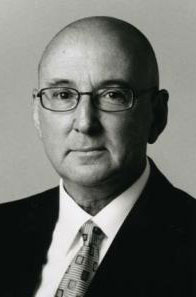Since the recession started in 2006 and accelerated after the GFC in 2008, the patterns of consumer spending have changed radically.
 At last week’s Australasian Spa Association (ASpa) conference in Melbourne delegates heard how consumers now live on two different planets: Planet Traditional and Planet NEO (the New Economic Order). And the distance between these two planets is growing at alarming speed.
At last week’s Australasian Spa Association (ASpa) conference in Melbourne delegates heard how consumers now live on two different planets: Planet Traditional and Planet NEO (the New Economic Order). And the distance between these two planets is growing at alarming speed.
We watched a video presentation based on the findings of Dr Ross Honeywill, Director of the Centre for Social Economics, and CEO of NEO Consulting Group; an internationally published author, social scientist and consumer strategist.
‘Society is split pretty much in two: the traditional economic order or Traditionals and the new economic order or NEOs,’ says Dr Honeywill. ‘And they are as different as button mushrooms and truffles.
‘The first type is the socially progressive, high-spending, high discretionary-choice NEOs, 93 percent of whom are in the Big Spender category (that is the top third of discretionary spenders in the economy).
‘Their traditional cousins have decidedly conservative social attitudes, are reluctant spenders and conservative investors; and exhibit low discretionary-choice behaviour.
‘Traditionals are price-sensitive and more interested in features, functions and the right deal than they are in quality and a premium relationship. As a consequence, only seven pe cent are in the top third of discretionary spenders.

‘NEOs are far from some small niche in society – they are a quarter of the population, and have powerful social and economic clout.
‘They will buy new technology – all those 3G mobile phones, wireless laptops, wireless broadband, iPads, digital cameras, and wireless scanners – but they’ll also spend their hard-won rewards on home extensions and renovations, travel, eating in and out, drinking, banking, investing in shares and online high-interest savings accounts, and an entire range of services that make their lives easier, more individual, and more controllable.
‘In addition to the four million NEOs in Australia, there are six million in Canada, 12 million in the UK, and 59 million in the US.’
It was compelling stuff and quite sobering for many listeners. In essence:
‘ Traditionals are after the ‘deal’ and if they’re not getting extraordinary deals they just won’t spend.
‘ NEOs are actually spending more freely than ever before, but only if the offering matches the values that are important to them.
The presentation, which we urge you to watch, revealed that businesses stuck in the middle of the space between these planets are, or will be in decline. A clear choice has to be made in order to prosper.
In June, SPA+CLINIC officially made that choice by changing our name after 14 years from Spa Australasia. We recognised the spa and beauty industry is becoming ever more clinical.
We put a lot of emphasis on how to upscale your business with device technology in the July issue and again in our latest, November, issue which you should have received recently.
If you are not a subscriber to the magazine, then we recommend you sign up for this vital resource!
But these are the key take-out points if you decide to dwell on Planet NEO.
AESTHETIC DEVICE TECHNOLOGY
Consumers are looking for more results-based treatments and products, and want those results in a time efficient manner.
This is all made possible by available technology such as lasers and light machines.
With the rapid evolution of this technology, the aesthetics industry has become more competitive than ever. If your salon, spa or clinic doesn’t move with these advances it is going to get left behind.
In saying that, upscaling your services to include equipment, or to have more advanced and sophisticated machines, needs to be a very well thought out process.
It is important to do your research in terms of who are Australia’s most reputable and established manufacturers or suppliers of equipment.
Apart from the fact you will be getting high quality machinery and all-round service, they will give you the best advice as to the type of equipment that best suits your business’s needs and growth potential.
Ensure that the developer or supplier has been in business for an extended period of time and that they not only provide a top quality machine but also provide expert training, marketing support, technical support, after-sales service and ongoing training support.
When looking to buy equipment ask questions like:
- Do you have technical service for scheduled service and repair – are spare parts readily available?
- Do you have training or clinical support if I need it?
- Where is the evidence that it really works – because if there aren’t any papers or case studies then how do therapists have the confidence to sell it to their client base?
You also need to educate yourself about the regulations that govern use of these devices (they differ from state to state) and seek out proper training and qualifications.
INJECTABLES
Offering a ‘one-stop shop’ for aesthetics consumers is a growing trend among spas and clinics in a bid to stay buoyant or expand in an ever-more crowded and competitive marketplace.
To keep customers loyal and attract new ones – as well as keep them all coming back more often – many businesses are joining forces with doctors or nurses to offer treatments such as dermal filler and anti-wrinkle injectables that only medical professionals can perform.
The arrangement most businesses have is that a doctor or nurse will attend the spa or clinic at semi-regular intervals, with customers being given plenty of notice so as to schedule appointments.
However, it’s far from a simple transaction, as a nurse and the business that engaged her services found to their detriment.
In its decision on June 12, the NSW Civil and Administrative Tribunal suspended the nurse’s registration to practise, finding her ‘guilty of unsatisfactory professional conduct and serious misconduct’ for the practice.
Products such as Botox are listed as Schedule 4 medications under the Poisons and Therapeutic Goods Act 1966 (NSW) and so must be used under the strictest supervision and abiding by all the legal guidlines.
Says Sydney cosmetic physician Dr Catherine Porter, spokesperson for the Cosmetic Physicians Society of Australasia (CPSA): ‘Under Australian law and Medical Board guidelines, nurses are not permitted to administer such treatments unless supervised by a doctor.
‘That is why, in 2009, we developed the Protocol for Delegated Cosmetic S4 Injections to assist both medical practitioners and nurses. This type of malpractice endangers patients and increases likelihood of adverse and undesirable results.’
Choosing the right medical professional for the role in the first place is of the utmost importance.
Nurses are permitted to perform anti-wrinkle and dermal filler injections but under medical supervision.
‘A spa or clinic owner should check out the doctor’s CV and assess where the training has taken place and what that training has been,’ says Dr John Flynn, censor in chief of the Australasian College of Cosmetic Surgery (ACCS).
‘You cannot just accept that because they have a medical degree they are automatically across the injectables arena and it certainly does not necessarily mean they are skilled.
‘The college would advise to see if the doctor is a member of the Australasian College of Cosmetic Surgery or one of the other professional groups within the discipline of cosmetic medical practice.’
Registered nurses are legitimately able to inject anti-wrinkle preparations and dermal fillers. However, because these are scheduled (ie. restricted) products they must be prescribed by a doctor and a client must first been seen by a doctor to ensure their health fitness and suitability for the procedure.
Before anyone can have anti-wrinkle and dermal filler injections, a doctor must prescribe them and work out an appropriate treatment plan for the individual.
The registered nurse involved in the treatment, needs to have current registration, adequate training in the procedure and the prescribing doctor needs to be satisfied with his/her qualifications.
An appropriate clinical enviroment must be created in your business if you are introducing injectables to the menu of services.
‘It is not appropriate, conducive to the client experience or, indeed, hygienic to be injecting in the same vicinity as where treatments like waxing, nails or tanning are taking place,’ says Dr Catherine Porter.
‘There should be a dedicated, private space that can be kept immaculately clean. At the very minimum there should be a sink handy for the doctor/nurse and patient to wash, a fridge to store products, proper medical furniture and laminate bench tops that can be easily wiped down and no carpet on the floor.’
As exciting as it is to be able to offer these services to your customers, you can’t shout them from the rooftop. This is an area where many can be caught out.
It is simply illegal to advertise Schedule 4 medications by brand name. You may only use acceptable descriptions set out by the Code of Practice such as ‘anti wrinkle injections’ or ‘dermal fillers’.
Spas and clinics, as with medi-clinics, need to observe the Code of Practice provisions for advertising that includes truth and accuracy in advertising.
There are particular provisions and requirements for before and after photographs. For example, photos cannot be airbrushed or altered. They must have an accurate caption describing all the treatments involved in the photo. It is also not permitted to offer time-limited discounts or these treatments as prizes or incentives.
There is much to consider when choosing to live on Planet NEO … but you may find your very business survival depends on it.




